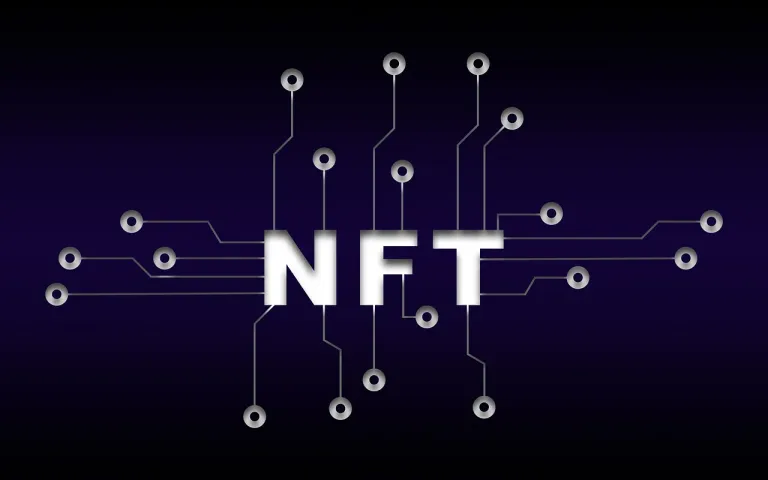Greetings Blurtarians, let's learn something new again today. As long-awaited innovations, Non-fungible tokens (NFT) are changing the dynamics of the digital art space by enabling artists to easily create, market and hold the rights of their art. Technically, non-fungible tokens are blockchain-based digital assets, which helps to create a system that allows the clients to prove the originality and ownership of a given digital artwork. This new technology is proving useful to a number of historical concepts that had been aggrieved for ages, for example, piracy and worthlessness.
Since art has become tokenized on the blockchain, artists can now simply engage with the rest of the world without having to go through any other people such as galleries. The artists have been able to reach more customers and have retained most of their earnings because of this model. Also, the incorporation of smart contracts allows the introduction of royalties to ensure that the artist gets their share from the resold pieces, paving the way for an effective income generating model.
The objectives of NFTs are not only economic but also aim to transform the processes that involve the making and consumption of artworks. The advancement of augmented reality technology will bring emergence of new kinds of multimedia or interactive art taking over the NFT industry. Such changes are changing the cultural landscape by popularising art in a digital form as an art industry.
- ENSURING RIGHTS AND PROTECTIONS IN CREATION
The problem of ownership in the digital age takes a different turn with the advent of NFTs. In the past, digital artists found it hard to justify proving an art piece as theirs simply because forms can be easily duplicated. Well, NFTs changes the game by incorporating the use of a blockchain datatbase to keep track of the ownership records as well as the history of that particular art piece.
With such feature, a user who purchases, for example, a painting will be able to confirm if he or she has purchased the original and how long that specific painting has been in circulation. This assures the collector of the original artwork and its history in the market hence increasing the value of the investment. Besides, for artists, it ensures that there are no infringements in copyright. The nonchangeability of blockchain makes these ledgers proper for keeping the historian order of previous owners, thus bringing more security to the deals.
Moreover, Develops a new way in which fans or anyone interested in a creator's content gets to support the creator by buying an NFT. When it comes to traditional art, it is often difficult to provide legal proof of ownership since complicated hierarchies and documentation are involved, whereas, in the case of NFTs, ownership is registered online and is readily available for all to see. Not only does this efficient system enable quicker exchanges, but it also facilitates the propagation of digital art as a worthy form of art.
- SUPPORTING CREATORS IN ATTAINING FINANCIAL FREEDOM
NFTs have transformed the market for digital artists by providing new monetization options. In traditional economies, however, a gallery or an auction house takes a cut of the sale. By contrast, NFTs have no need for these services and thus allow the audience to reach the creator directly.
Thanks to its technical infrastructure and design, the NFT allows one to earn from an artwork by embedding a smart contract that provides for royalties to the author every time the artwork is resold. This motivates artists to create valuable artworks, which will contribute to more income for them in the future. This method of receiving payments allows for more equity in paying for the use of creations since change in time also means change in the usage profits.
Furthermore, the NFT platform has a global vision. People from different races and countries are able to display their works to the world freely. Such equity makes the system advantageous even to the rising creativity and the competing artists and so they gain independence economically mean self sufficiency.
- CHANGING THE MEANING OF ART AND IT'S RELEVANCE IN THE CONTEMPORARY WORLD.
Thanks to new technologies, claims to define art have gone further than what was previously considered the borderline. Resting on the ongoing Creative Revolution, established artists have started to work in 3D, use AR and video that features kinetic art, and perform other additional dimensions to their art. These advancements modify profoundly the aspects of art that consumers participate in.
New forms of ways in which artists can display their art are provided by virtual galleries and metaverse spaces. Thanks to this, art can be consumed even within residing spaces, as it becomes possible for the collector to interfacing with the virtual art. Such systems increase the creations of NFTs away from assets to works of art that can be existed with.
Moreover, NFTs provide inclusive means for creators and their followers to come up with ideas and execute them. This is seen, for instance, where an artist is able to come up with a project in which the buy influenced the making of the work enhancing the artist-audience interaction. This interaction provides platforms for creativity and also serves as a rallying point for community building.
To conclude this I wish to say that, NFTs have changed the game of digital art for good, providing solutions to the problems of ownership, monetization, and accessibility. They use blockchain to give power to the creators and open new art markets while encouraging new ways of practicing art. With increased adoption, it is expected that NFTs will also change the process of art creation, sharing, and appreciation for every individual involved in the creative sector. Such an evolution presents great opportunities for practicing artists and the growth of the digital art market via the use of blockchain technology.
.webp)

.webp)